The Heath Tiger Beetle stayed unnoticed in Belgium during the past decades, until it was rediscovered a few years ago in a handful of locations on the border between Flanders and The Netherlands. A week ago I spent the whole day in the field to obtain some images of this enigmatic beetle.
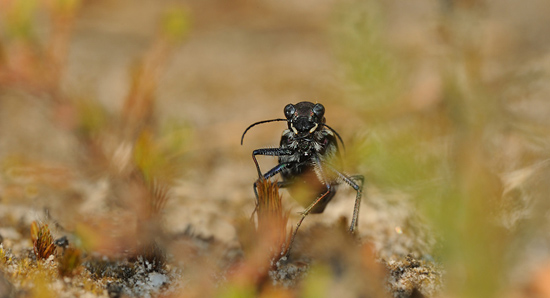
On the one hand I was lucky the tiger beetles were pretty active that day as it was a very hot. So finding several active specimens was relatively easy once I was in the right spot. On the other hand, precisely because of the high temperature, the beetles were very alert and flew quickly off, often even before I noticed them on the ground. So my technique consisted of walking extremely slowly in the right habitat, whilst scanning the ground and hoping to spot an individual. Once I found one, I slowly stepped a little back, and then bent quietly down until I could lay flat on my belly on the ground. I did these movements at a reasonable distance from the beetle, just not to scare it off with my movements. Once I was in a very low position, the impact of moving towards the beetle became lower and I didn’t have to avoid constantly making shadow above the beetle. Then I could start to crawl towards the beetle and hope it didn’t ran away too far from me in a chase after its prey. After several attempts I managed to approach the beetle at a reasonable distance and get some first images. Only during the latest hours of the day I got nice light conditions, the beetles seemed then to have cooled down and became a little less volatile.
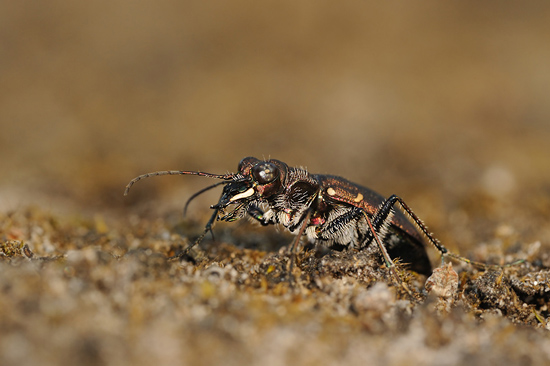
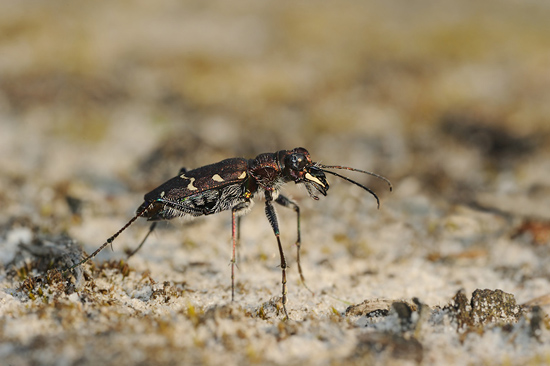
I photographed the species in a heath restoration area which was created about four years ago. The species was mainly active in the very small patches of bare sand and open mossy dunes surrounded by cover provided by heath, Scots Pine seedlings and Purple Moor Grass, where the beetles seem to hunt their prey from an ambush in the shade of the vegetation cover. Here are some images from the habitat, where I made the photographs.
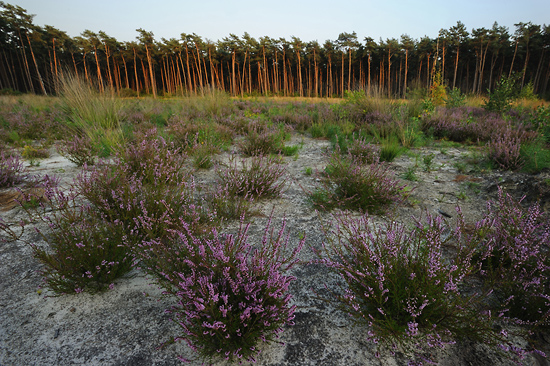
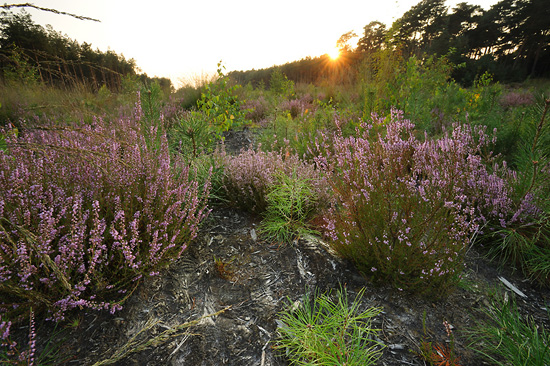
Good to ascertain that we can still count on successful nature conservation results in a ‘tiny and densely populated area' like Flanders. All the credits go to the conservation efforts of very dedicated and technically skilled people, who took the initiative of carefully restoring the heath and land dunes. This project also led to increases in the local population of European Nightjar, Woodlark, Tree Pipit and Common Stonechat.
Facts about the Heath Tiger Beetle – Cicindela sylvatica
The Heath Tiger beetle is the largest Tiger Beetle in Belgium, it can measure up to 20 mm. Although the Heath Tiger Beetle has a wide Palearctic distribution, the species demands very specific habitat characteristics and is often quite localized and uncommon. In Western Europe the species is becoming increasingly rare and in Belgium it is listed as a ‘critically endangered species’ on the Red List. It is a very thermophilic species, and its distribution is restricted to the large heath areas. Unlike the Northern Dune Tiger Beetle which is found in a lot of open habitats with bare soil and reaches high densities in the large and open sand dunes, Cicindela sylvatica is restricted to heath areas with more specific demands: it needs smaller patches of bare soil or a very short mossy vegetation, surrounded by enough higher cover in the close vicinity.
On the image underneath, the typical characteristics from the Heath Tiger Beetle are well exposed: the dark-brown to blackish colour, the black upper-lip, the typically shaped smal creamy-coloured spots and clearly-marked irregular dark spots (depressions) on the elytra.

Finally an image of Cicindela sylvatica, made at eye-level and showing well the subtle purple and bordeaux-coloured reflections on the edge of the elytra and the back of the head.
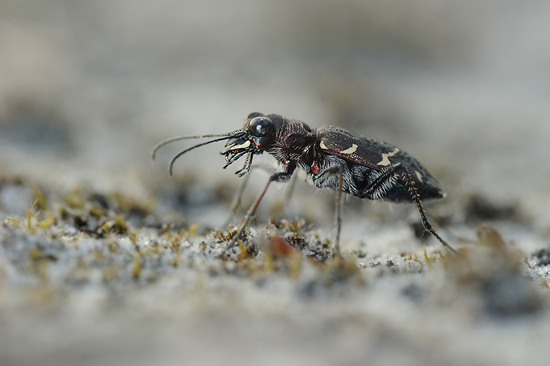
While crawling between the vegetation I was happily surprised with this welcome bonus: I ran into a pair of mating Northern Dune Tiger Beetles, which were friendly enough to pose for me during a few seconds.
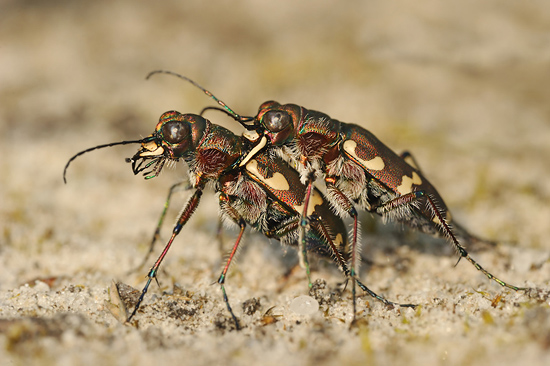
More images from the Heath Tiger Beetle can be found in the stock photography.
